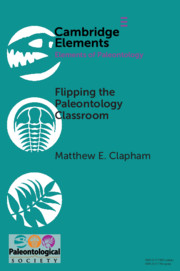Element contents
Flipping the Paleontology Classroom
Published online by Cambridge University Press: 24 October 2018
Summary
- Type
- Element
- Information
- Series: Elements of PaleontologyOnline ISBN: 9781108681421Publisher: Cambridge University PressPrint publication: 15 November 2018
References
- 13
- Cited by



